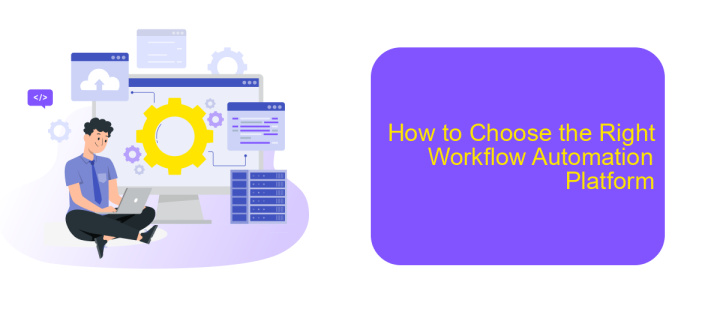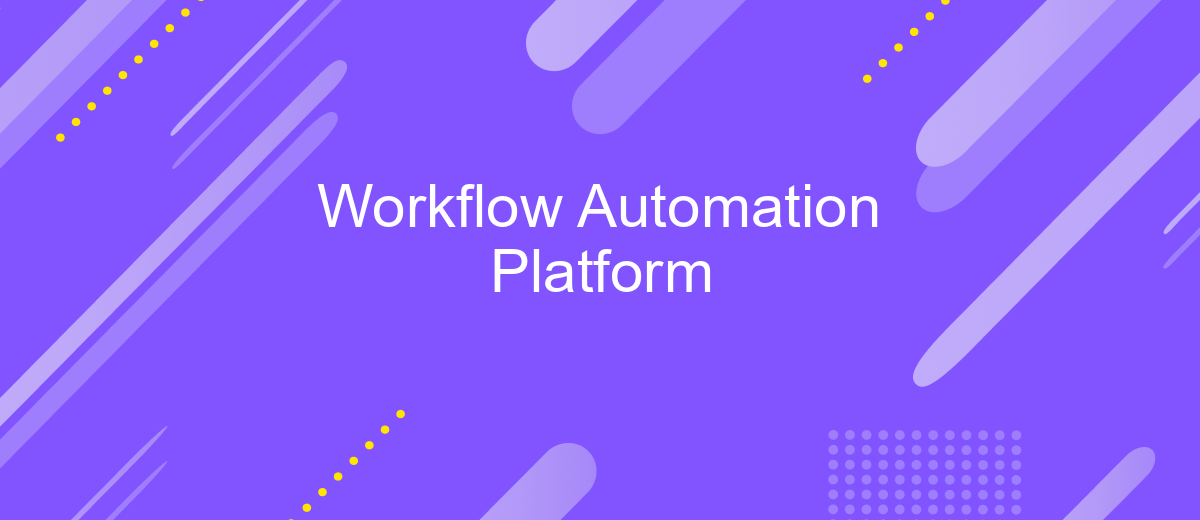Workflow Automation Platform
In today's fast-paced business environment, efficiency and productivity are paramount. A Workflow Automation Platform streamlines complex processes, reduces manual tasks, and enhances operational efficiency. By automating repetitive workflows, businesses can focus on strategic initiatives, minimize errors, and accelerate growth. Discover how implementing a robust Workflow Automation Platform can transform your organization's performance and drive success.
Introduction to Workflow Automation Platforms
Workflow automation platforms are essential tools for modern businesses aiming to streamline their operations and enhance productivity. These platforms enable organizations to automate repetitive tasks, ensuring that workflows are executed efficiently and consistently. By minimizing manual intervention, businesses can reduce errors and focus on more strategic activities.
- Automate repetitive tasks and processes
- Enhance operational efficiency and consistency
- Reduce human errors and manual intervention
- Integrate with various applications and services
- Focus on strategic and value-added activities
One of the key features of workflow automation platforms is their ability to integrate with a wide range of applications and services. Tools like ApiX-Drive facilitate seamless integration, allowing businesses to connect different systems without the need for complex coding. This capability ensures that data flows smoothly across platforms, further enhancing the efficiency of automated workflows.
Benefits of Using a Workflow Automation Platform

Implementing a workflow automation platform can significantly enhance operational efficiency by automating repetitive tasks and reducing manual errors. This leads to increased productivity as employees can focus on more strategic activities rather than mundane administrative work. Additionally, automation ensures consistency and accuracy in processes, which is vital for maintaining quality and compliance standards.
Another major benefit is the seamless integration capabilities with various tools and applications. For instance, services like ApiX-Drive facilitate easy integration of different software solutions, allowing for a more cohesive and streamlined workflow. This not only simplifies data management but also enhances collaboration across different departments. Ultimately, a workflow automation platform can lead to better resource utilization, cost savings, and a more agile business environment.
Key Features of a Workflow Automation Platform

A Workflow Automation Platform streamlines business processes by automating repetitive tasks, improving efficiency, and reducing human error. These platforms come with a variety of features designed to simplify workflow management and enhance productivity.
- Drag-and-Drop Interface: Create and customize workflows easily without any coding knowledge.
- Integration Capabilities: Seamlessly connect with other software and services, such as ApiX-Drive, to automate data transfers and synchronize tasks across different platforms.
- Conditional Logic: Set up complex workflows with if-then conditions to handle various scenarios automatically.
- Real-Time Analytics: Monitor workflow performance and gain insights through detailed reports and dashboards.
- Notifications and Alerts: Receive instant notifications for task completions, delays, or errors, ensuring timely interventions.
- Scalability: Easily scale workflows to accommodate growing business needs without compromising performance.
These key features make Workflow Automation Platforms indispensable tools for businesses looking to optimize their operations. By leveraging platforms like ApiX-Drive for integrations, companies can further streamline processes and achieve higher levels of efficiency and accuracy.
How to Choose the Right Workflow Automation Platform

Choosing the right workflow automation platform is crucial for streamlining your business processes and increasing productivity. The first step is to identify your specific needs and objectives. Consider what tasks you want to automate and how a platform can help you achieve your business goals.
Next, evaluate the features and capabilities of different platforms. Look for a solution that offers a user-friendly interface, robust reporting tools, and seamless integration with your existing systems. It's also important to consider the scalability of the platform to ensure it can grow with your business.
- Identify your automation needs
- Evaluate features and capabilities
- Check for ease of integration
- Consider scalability
- Review user feedback and testimonials
Integration capabilities are essential for a workflow automation platform. Services like ApiX-Drive can simplify the process by allowing you to connect various applications without the need for coding. By choosing a platform that supports easy integration, you can ensure a smooth and efficient workflow across all your business tools.
Implementation and Best Practices for Workflow Automation
Implementing a workflow automation platform requires a clear understanding of your existing processes and goals. Begin by mapping out your workflows to identify repetitive tasks and bottlenecks. Choose a platform that aligns with your business needs and offers robust integration capabilities. ApiX-Drive, for example, simplifies the integration process by connecting various applications without the need for coding. This ensures a seamless flow of information across different systems, enhancing overall efficiency.
Adopting best practices is crucial for the successful implementation of workflow automation. Start with a pilot project to test the platform’s capabilities and gather feedback. Ensure that your team is adequately trained and understands the benefits of automation. Regularly review and optimize your workflows to adapt to changing business needs. Additionally, maintain clear documentation and establish a governance framework to manage automation rules and exceptions effectively. By following these steps, you can maximize the benefits of workflow automation and drive significant improvements in productivity and accuracy.


FAQ
What is a workflow automation platform?
How does workflow automation benefit a business?
Can I integrate different applications with a workflow automation platform?
Is it difficult to set up and manage workflow automation?
What kind of tasks can be automated using a workflow automation platform?
Routine tasks take a lot of time from employees? Do they burn out, do not have enough working day for the main duties and important things? Do you understand that the only way out of this situation in modern realities is automation? Try Apix-Drive for free and make sure that the online connector in 5 minutes of setting up integration will remove a significant part of the routine from your life and free up time for you and your employees.

